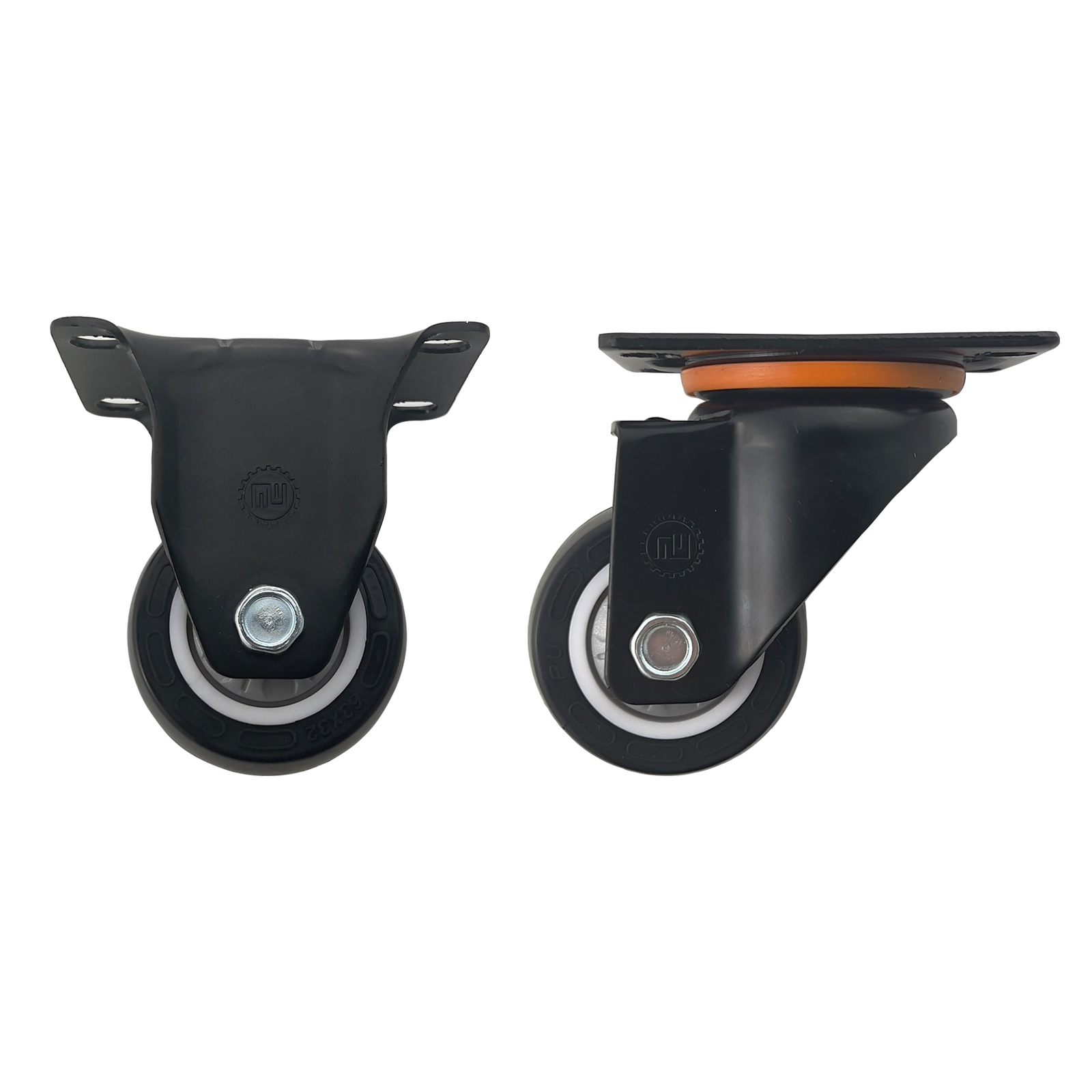Shock-absorbing casters are essential for transporting delicate equipment or materials over uneven surfaces. In environments where vibration, shock, or impact can compromise safety or product integrity, choosing the right caster becomes a critical design decision. Whether used in manufacturing, medical facilities, aerospace, or robotics, shock-absorbing casters reduce stress on transported loads, improve maneuverability, and enhance equipment longevity.
Here we’ll explore what makes a caster ideal for shock absorption, analyze types of shock-absorbing caster designs, and highlight key application scenarios. We’ll also recommend some of the best casters based on use cases and explain how to match your needs with the right caster specifications.
What Is a Shock-Absorbing Caster?
Shock-absorbing casters are engineered to reduce the impact of vibration, sudden jolts, or continuous motion over rough or uneven terrain. Unlike standard rigid or swivel casters, these are built with mechanisms that dampen force. These mechanisms often include:
● Spring-loaded suspension systems
● Elastomeric or pneumatic wheels
● High-resilience polyurethane treads
● Vibration-dampening mounts
They are commonly used in medical equipment carts, electronics transport systems, heavy-duty industrial platforms, and automated guided vehicles (AGVs).
Durable TPR (Thermoplastic Rubber) Casters
Key Factors That Influence Shock Absorption
When selecting casters for shock absorption, consider the following key factors:
Load Capacity
Overloading a caster beyond its recommended load range can negate its shock-absorbing function. Look for shock-absorbing casters with load capacities appropriate to your equipment, ideally with a 10–20% safety margin.
Wheel Material
Wheel material plays a crucial role in shock mitigation. Common choices include:
● Pneumatic wheels: Filled with air, ideal for ultra-smooth transport across rugged terrain.
● Semi-pneumatic wheels: Foam-filled versions of pneumatic wheels, offering cushioning without the risk of deflation.
● Polyurethane wheels: Durable and vibration-resistant, ideal for environments with frequent starts and stops.
● Thermoplastic rubber wheels: Offer quiet operation and excellent shock absorption, often used in hospital and laboratory carts.
Suspension System
Spring-loaded or suspension casters offer active shock absorption. The spring system compresses upon impact, reducing the force transferred to the load. Some casters feature adjustable spring rates, allowing users to fine-tune suspension based on payload weight.
Floor Surface
Casters designed for smooth concrete may not perform as well on gravel or tiled floors. Match caster tread and suspension to your floor surface conditions to ensure optimal performance.
Types of Shock-Absorbing Casters
Spring-Loaded Casters: Spring-loaded casters use internal or visible coil springs to compress and absorb shocks. These are widely used in material handling and logistics.
Pneumatic Casters: Pneumatic casters use air-filled rubber wheels to cushion impacts. They are ideal for fragile loads, especially in outdoor or mobile equipment setups.
High-Damping Polyurethane Casters: Casters made with high-resilience polyurethane provide passive shock absorption and are excellent for controlled indoor environments. These casters are often used in AGV caster wheel configurations in automated warehouse systems.
Leveling Casters with Shock Absorption: These casters not only absorb shocks but also offer height adjustability. Often seen in sensitive lab setups or 3D printer tables, leveling casters with elastomer pads reduce vibration while keeping equipment stable.
Best Use Cases and Application Scenarios
Medical Equipment: Hospital carts and imaging equipment must be stable and vibration-free. Medical grade shock-absorbing casters with quiet thermoplastic rubber treads and sealed bearings are crucial for smooth, silent operation.
Aerospace and Electronics: Transporting avionics or high-precision instruments requires maximum protection from vibration. Anti-vibration casters for electronics transport utilize advanced elastomers and dual-suspension mechanisms.
Industrial Material Handling: Forklift platforms, mobile workstations, and heavy tooling systems often use heavy-duty spring-loaded casters to minimize the effect of rough factory floors. Look for casters with steel housings and shock-rated polyurethane wheels.
Automated Guided Vehicles (AGVs): AGVs require casters that support dynamic motion and payload variation. Manufacturers often specify AGV caster wheels with integrated damping systems and high-load elastomer wheels to protect onboard systems from wear.
Military and Defense: Shock-absorbing casters are essential for mobile radar units, field operation equipment, and modular defense systems. Durable, all-terrain casters with sealed suspension mechanisms ensure performance in hostile environments.
Choosing the Right Shock-Absorbing Caster: A Step-by-Step Guide
● Define the Payload: Include equipment weight and expected max load.
● Evaluate Floor Conditions: Determine if you're dealing with smooth indoor flooring, rough concrete, or outdoor terrain.
● Determine Operating Environment: Consider exposure to chemicals, temperature variations, or moisture.
● Select Suspension Type: Choose from spring-loaded, pneumatic, or elastomer-damped systems.
● Consult Manufacturer Specs: Use OEM tools for dynamic load calculation and custom fitting.
Design Trends in Caster Engineering for Vibration Damping
Shock-absorbing casters are evolving with industrial needs. Here are some emerging trends:
● Smart Casters with IoT Sensors: Track vibration, load, and motion in real-time.
● Sustainable Materials: Use of eco-friendly elastomers and recyclable metals.
● Modular Wheel Systems: Interchangeable wheel cores and treads to optimize performance.
● Noise-Reduction Enhancements: Quiet rolling casters with integrated sound-dampening features.
These trends indicate a shift toward smarter, more sustainable mobility solutions in both manufacturing and service environments.
Conclusion
Selecting the best caster for shock absorption involves a thoughtful understanding of your equipment, environment, and operational goals. From spring-loaded and pneumatic to polyurethane and medical-grade casters, there are numerous options tailored for specific shock-dampening needs.
Ultimately, investing in the right shock-absorbing caster wheels ensures smoother transport, enhanced safety, and prolonged equipment life.
Whether you’re designing a mobile medical cart, an industrial platform, or an AGV system, the right equipment caster solution can make all the difference in operational efficiency and equipment protection. Consult with reputable caster manufacturers to match the right product to your use case, and don’t overlook the importance of detailed specifications like spring deflection rates, wheel hardness, and load distribution.

